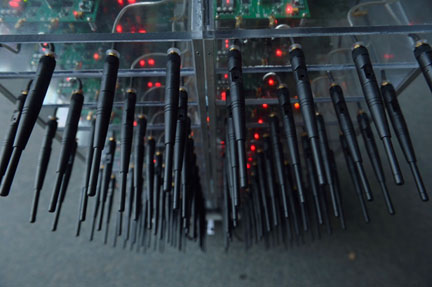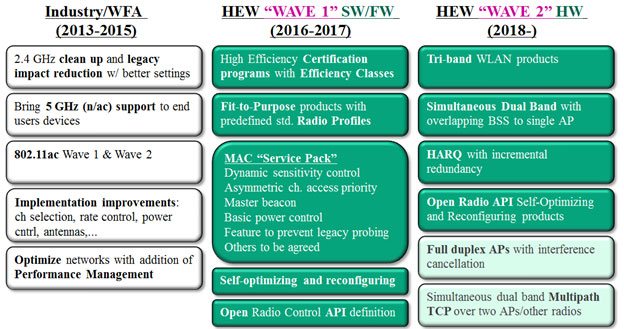Blog
Last week, the IEEE802.11 had the official quarterly (plenary) meeting in Dallas. Again, it was the 802.11HEW Study Group that garnered the most interest of all activity there. The HEW Study Group has been tasked to kick off standardization leading to a substantial increase in real-world throughput, and into instantly recognizable improvement in the Quality of Experience of the major WLAN use cases.
The need for better quality Wi-Fi showed up during the meeting too! The Wi-Fi in the upscale host hotel did not connect at all most of the time. Without any specific tools it seemed like air utilization was extremely high with low –b rates unnecessarily enabled and preventing authentication to services. In the IEEE802 purpose built Wi-Fi, the network end user throughputs were around 1-2 Mbit/s during the HEW sessions and at certain time connectivity was lost completely. Unfortunately, this is not that uncommon with Wi-Fi experiences today -- not exactly the 300 Mbit/s or 450 Mbit/s number you see on your laptop that often gets confused with practical end user throughputs. But hey, isn't that why we're there talking about the need for High Efficiency WLAN?
All presentations can be accessed from the IEEE802.11 Mentor server
In my opinion, the coolest presentations from overall technology perspective were:
- Clayton Shepard, Rice University, Houston: Practical Massive-MIMO
- A massive array of spatial streams
- View Powerpoint Slides

- Philip Lewis, Stanford University: STR Radios and STR Media Access
- Full duplex on one channel with interference cancellation
- View Powerpoint Slides
- Koichi Ishihara, NTT: Simultaneous Transmission Techniques
- Expand multi way MIMO concept further with OFDMA
- View Powerpoint Slides
Thinking of the best practical HEW scope, I liked the following presentations the most:
- Graham Smith, DSP Group: Dynamic Sensitivity Control
- Modifying channel access (CCA) protocol for better efficiency
- View Powerpoint Slides
- Brian Hart, Cisco: Renewing 2.4 GHz
- Clean up the 2.4 GHz “junk band”
- View Powerpoint Slides
- Guido Hiertz, Ericsson: Proposed Direction and Priorities for HEW
- A collection of practical MAC efficiency improvements
- View Powerpoint Slides
I myself presented my concept for HEW as well, which resonated quite a bit with the three above listed ones:
- Improving WLAN Efficiency and QoE – A Top-Down Approach
- I suggested a three phase, six item action plan attacking the practical aspects which would enable real world networks to operate better:
- View Powerpoint Slides

My sense from the meeting is that it seems major PHY level changes are getting a lot of support from the hardware vendors. At the same time, it looks a bit more unlikely that some non-hardware improvements that could come out soon will actually hit the market.
HEW seems to be turning out to be the Next Generation Wi-Fi, rather than urgently needed enhancements to resolve plaguing QoE issues. As a result, we likely won't have 802.11HEW Wi-Fi gear available until 2019 at the earliest. I must say that I'm a bit worried that that's a bit late.
In the meantime, we can optimize Wi-Fi networks with already proven performance management and optimization practices and ratchet up to 10x end user throughput increases. These gains will be available only for those who enter the world of Wi-Fi performance management. Unfortunately, standards for more efficient Wi-Fi may not help here any time soon.